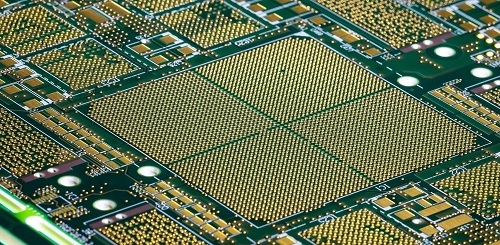What Is High-Density PCB & How Does It Work?
What Is High-Density PCB ? – WINOW Technology
Many people are wondering what is high-density PCB so let’s talk about it. High-density interconnects (HDI) PCBs are high-speed computer boards with a high density of interconnections between components. They are used in many applications, including aerospace and defense, telecommunications, networking, and industrial equipment.
If you need customized HDI PCB Manufacturing Solutions, please contact WINOW. WINOW is a professional PCB manufacturer in China with a good reputation. WINOW is able to offer you high-quality and competitive prices. If you need any information about WINOW products or services, please feel free to contact WINOW at any time!
High-density boards are the new way to go when it comes to designing a PCB. They are more compact, efficient, and cost-effective than their counterparts. So what is high-density PCB? High-density interconnects (HDI) PCB technology is a process of creating circuit boards with a higher density of interconnections than traditional printed circuit boards. In contrast to older technologies, HDI PCBs are made using advanced techniques such as laser drilling and micro vias, which allow for smaller interconnections and higher circuit densities.
The term “high density” refers to the number of electrical connections that can be placed in a given area on a printed circuit board or PCB. HDI PCBs are manufactured using advanced techniques such as laser drilling and micro vias, which allow for smaller interconnections and higher circuit densities.
High-density interconnects (HDI) are an industrial manufacturing process that allows for better performance in electronic devices by increasing their surface area. This process involves placing copper traces on both sides of an insulating substrate for increased performance.
What Is High-Density PCB & Why Should You Know About It?
High-density PCB is a type of printed circuit board (PCB) that is used in many different applications and industries. High-density boards can be made with a variety of different materials, such as FR408 glass epoxy, FR4 glass epoxy, FR6 glass epoxy, and HDI high-density interlayer. High-density PCBs are typically used in electronics applications where the circuit has to be particularly small or where there is not enough space for multiple layers.
High-density PCBs are also called “high-performance” boards. These boards are used for applications that require higher performance than standard PCBs can provide. There are three major ways to manufacture high-density PCBs: surface mount technology (SMT), thick film technology (TFT), and thin film technology (TFT).
The importance of high-density PCBs lies in the fact that they can help reduce the size and weight of electronic devices. They also improve performance and reduce costs. High-density PCBs are also useful in reducing circuit errors.
High-Density PCBs have several advantages over traditional printed circuit boards:

1. Smaller Size
All of the metal pads on an HDI PCB are connected to each other with a single layer of copper foil. This means that there are fewer layers to drill through when you’re making your own components or soldering them onto your board.
2. Better Heat Dissipation
HDI PCBs have thicker traces than standard boards because they have fewer layers between them and their sockets or leads. This allows heat to dissipate more easily so that your device stays cool during operation.
3. Better Signal Transmission
Because of their smaller size, HDI PCBs can handle higher frequencies than other boards without losing signal integrity through capacitance or inductance effects resulting from trace lengths being too long (or too short).
Tips For Using High-Density PCB
High-density PCBs are more expensive than standard boards, so you need to make sure you’re using them correctly. Here are some tips for getting the most from your high-density boards:
1. Use A Through-hole Design
Through-hole components are a lot easier to solder than SMD parts. This means that through-hole designs can be made much faster and cheaper than SMD designs. If you want to save money while still getting the benefits of high-density PCBs, consider designing with through holes.
2. Make Sure You Buy Enough Components
High-density boards can fit more components in a smaller space, but they also take up more space on the board itself. This means that if you don’t buy enough components for your design, you may end up with parts falling off or being too close together and shorting out against each other or against traces on the board itself. If possible, try to buy extra components when designing your board so that this doesn’t happen.
3. Make Sure You Have Enough Space Between Components
One of the biggest challenges when designing high-density PCBs is ensuring that there is enough space between components to prevent short circuits and overheating during manufacture. This means that you should never place two devices next to each other on a single side of the board unless there is an insulator in between them. If this isn’t possible, consider placing another component in between them so that there will be enough space between them when they are soldered down later on in the manufacturing process.
The Best WINOW High-Density PCB Solutions For Your Project
When you’re looking for high-density PCBs, WINOW is your best option. WINOW PCB is a professional manufacturer of high-density PCB and PCB assembly services, with rich experience in providing high-quality and high-density PCB solutions.
We offer the largest range of board thicknesses and materials available anywhere in the world. Our products are widely used in many fields such as industrial control, aerospace system, medical equipment, military electronics, communication technology, etc.
Our engineering team is dedicated to finding the perfect solution for your project. We’ll work with you to find an approach that meets your needs, whether it’s a single-layer or multilayer board.
We also offer a wide range of surface finishes and coatings to meet any application. With our high-density PCB solutions, you can be sure that your design will perform as expected every time.

